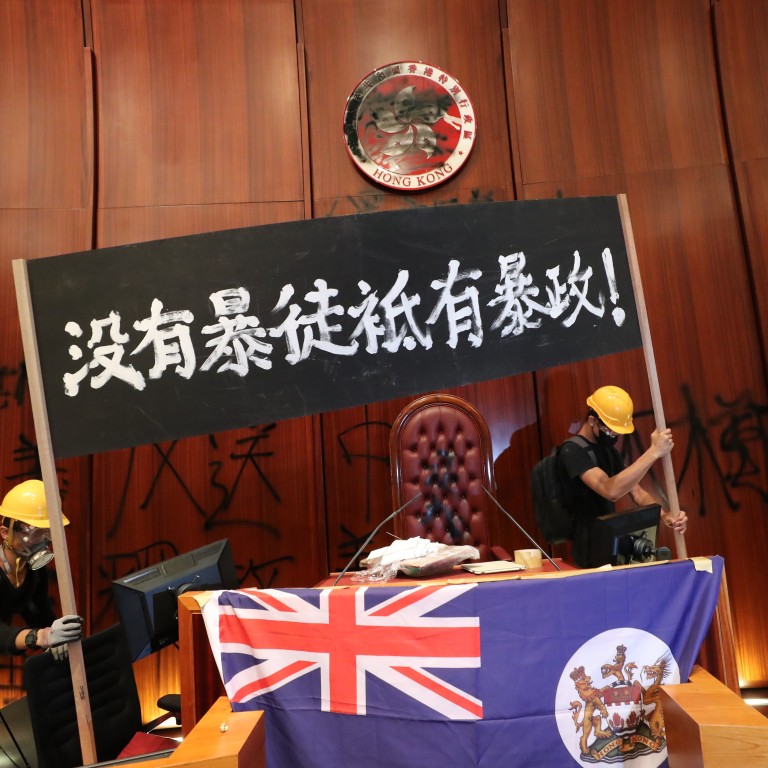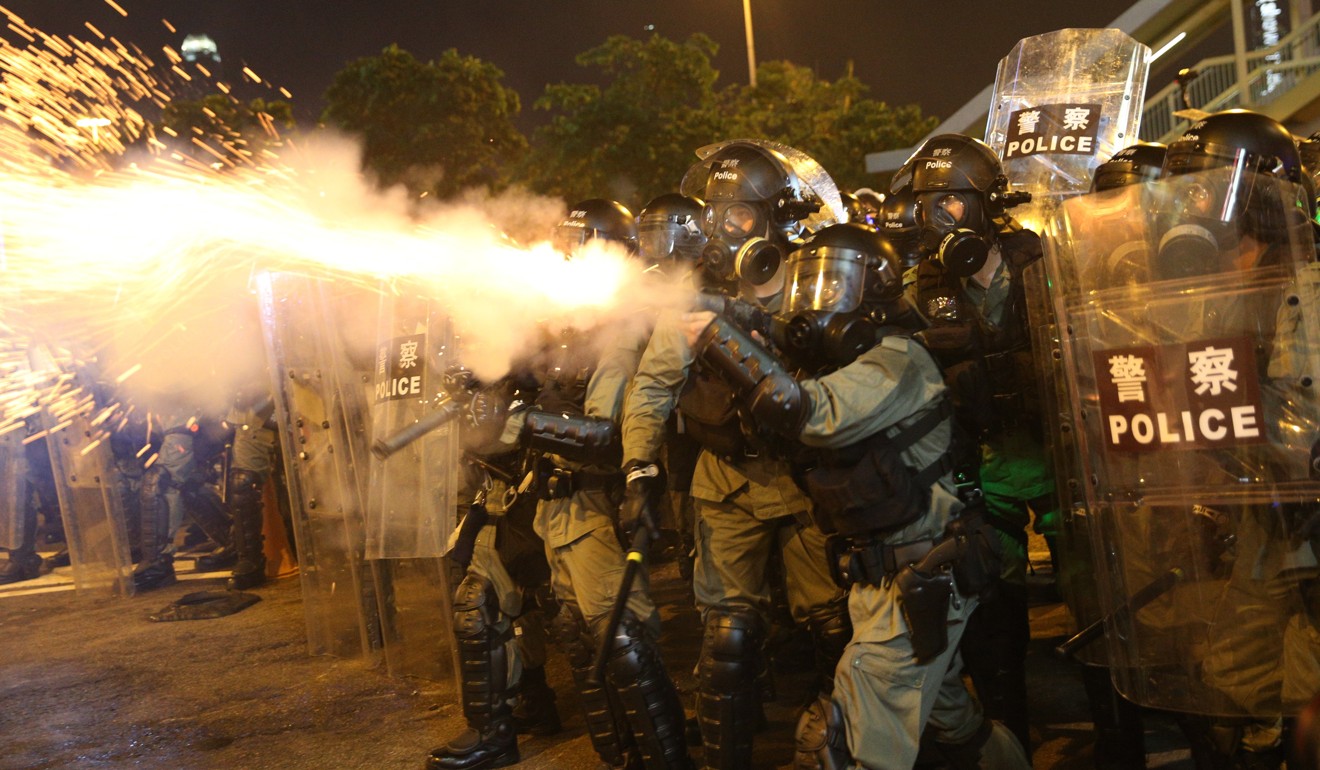
Hong Kong protesters increasingly sympathise with radical action, survey finds, after months of anti-government unrest
- More than 95 per cent of demonstrators agree that, without government concessions, radical tactics are understandable
- Researchers behind on-the-ground polls also note slender majority in favour of escalation, and very few calling for a pause to the unrest
Anti-government protesters increasingly sympathise with the use of radical action, as political unrest in Hong Kong enters its third month and clashes with police grow more violent, according to on-the-ground surveys.
Researchers behind the study cited the government’s intransigence and the Yuen Long station attack for fuelling the shift in stance, adding that they found little appetite among the activists for a break from the protests.
Of 717 people polled during a Tseung Kwan O protest on August 4, more than nine out of 10 (95.9 per cent) agreed with the statement: “When the government fails to listen, the use of radical tactics by protesters is understandable.”
That was a sharp increase from under seven in 10 (69.1 per cent) of 875 protesters who gave the same answer on June 16.
While 12.5 per cent disagreed with the statement on June 16, a mere 0.9 per cent disagreed on August 4.
Only about a third of those polled on August 4 thought radical action would upset the general public. This was also down from more than half of those surveyed on June 12.
The surveys were part of a series jointly carried out at 12 protests from June 9 by Chinese University’s Francis Lee Lap-fung, Baptist University’s Edmund Cheng Wai and Samson Yuen Wai-hei of Lingnan University. By August 12, they had collected 6,688 completed questionnaires from protesters.
The findings of the latest survey, published on Monday, came amid escalated use of force by protesters and police.
Police ramp up force as Hong Kong rocked by more protest violence
Noting there were both peaceful and radical protesters at the demonstrations, Cheng, an assistant professor at Baptist University’s department of government and international studies, said the bonds between members within the two groups had become stronger.
“The acceptance and tolerance of escalated actions among protesters have risen,” he said.
The protests, which began in June, initially targeted legislation introduced by the government to allow criminal suspects to be sent to jurisdictions with which Hong Kong has no extradition agreement, including mainland China.

Although the bill has been shelved, the protests have continued and spread to several parts of Hong Kong.
The first violent clash came in Admiralty on June 12, as tens of thousands surrounded Hong Kong’s legislature and government headquarters. Police officers deployed rubber bullets, tear gas and pepper spray, while protesters hurled bricks at the police.
After twice besieging the police headquarters in late June, protesters broke into the Legislative Council on July 1, destroying and vandalising some facilities.
Since then, protesters have besieged other district police stations, including those in Sha Tin and Tuen Mun, scrawled graffiti on walls, thrown bricks through windows, and started fires.
When relatively moderate actions prove inadequate to force the government to respond, there is a ‘natural tendency’ for protesters to escalate their actions
Police have responded with increased force. Since June 9, they have fired more than 1,800 rounds of tear gas, including 800 rounds on August 5 alone during a citywide strike. More than 300 rubber bullets and about 170 “sponge grenades” have also been used.
Lee, who directs Chinese University’s School of Journalism and Communication, attributed the radicalisation of protesters to the lack of a substantial response from the government.
Noting that the government took no action beyond suspending the extradition bill on June 15, he said: “When relatively moderate actions prove inadequate to force the government to respond, there is a ‘natural tendency’ for protesters to escalate their actions.”

Cheng said the rising approval for the use of force by protesters could be related to the attack by a white-clad mob on protesters and bystanders at Yuen Long railway station on July 21, after which at least 45 people were sent to hospital. By the time police arrived, the attackers had left the scene.
“It was an obvious disruption of order,” Cheng said. “The police, who are supposed to maintain order, were not seen taking action.”
A survey of protesters at a march in Yuen Long a week after the rampage recorded a spike in the number who approved of protesters taking radical action, he said. In that July 27 survey, 84.5 per cent strongly agreed that protesters could take radical action, up from 68.9 per cent a week earlier.
Lee and Cheng agreed that the targeted nature of the protesters’ violence may have prevented a major public backlash against them.

“There was no violence targeting citizens and their property,” Lee said.
The ongoing protests attracted peaceful and radical groups of protesters and, at seven demonstrations from June 17 to August 4, more than 70 per cent of those polled said cooperation between the two groups could maximise the effects of the protests.
At Tseung Kwan O on August 4, nearly nine in 10 (88.5 per cent) felt the two groups should cooperate for greater effectiveness.
The latest survey results also indicated that the protests would continue. On August 4, only 1.9 per cent called for a pause in protests, whereas 54.1 per cent were in favour of an escalation in action.
About 40 per cent felt protesters should continue their current style of protest and mobilise regularly.
Lee expected the protests to continue, unless the government makes a major concession or deploys “strong repressive forces”.

